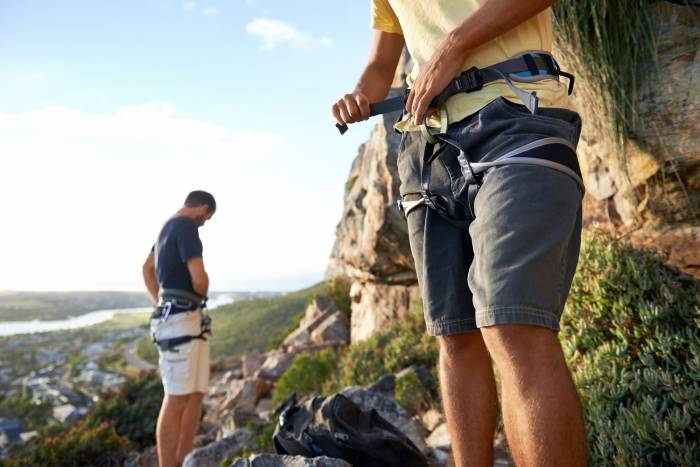Mark, a JanSport merchandise manager from Chicago and my rope partner for the climb, shared a tent with me. We settled into our sleeping bags around 6:00pm to try to get a few hours of sleep before a 12:40am departure toward Rainier’s crater rim.

All too soon: “Climbers, let’s get up.” Thus came the call to rise some time around midnight. I hurried and pulled on my clothing. Double checked my camera gear. Grabbed my ice axe, and joined the team for a fast midnight “breakfast” and some quick instructions.
The larger group broke up into roped teams. My small squad — just Mark, our guide, and me — moved slowly up the mountain and into the dark. Our beams shined on the snow. Looking back, a dotted line of headlamps zigzagged behind.

The leisurely pace of the previous day had left us with pretty fresh legs. By now, though, getting near 12,000 feet most of the climbers were experiencing at least the small affects of the altitude. A few minutes into the climb we crossed our first visible crevasse — I held my breath as I stepped over. Though less than a foot wide, the crack ran 50 feet or more before its icy blue walls pinched together. Further up, there were crevasses large enough to swallow a house.
Weather intensified toward the top — whipping winds lifted ice from beyond my headlamp beam and slung frozen chips in strong gusts. I bent into the wind and hid my face. Our guides, seeing potential for things to get worse as the day progressed, decided a fast summit and descent was the best option.

Breaks that most guided groups take were skipped. The pace was pushed. It felt good to suffer, to earn my first big alpine summit with some grit.
We climbed through the dark. My legs burned. At last, hours into the night, I heard the announcement that the summit was close. “Ten minutes to the crater ridge!” a guide shouted out.
At 4:40am, only four hours after we left Ingram Flats, I stepped onto the belly of Rainier’s crater. Drunken legs and depleted thighs were well worth that moment. On the eastern horizon, the sunrise was a sliver of orange. No time to soak in the moment, though, as we had to drop our packs and stomp to the actual highest point on Mount Rainier.
14,410 feet! A few whoops and hollers from the summit perch, and then my group headed down. Steaming cracks and exposed rocks, hot to the touch, gave reminder that I was walking on a volcano, live and brewing.

Most mountaineers will tell you that the summit is only half way. While that is true, I felt a strong sense of accomplishment as we began the downhill section of the climb. However, more falls happen on tired, wobbly legs on the way down. Mark struggled a bit. His eye, irritated from a piece of ice hitting his cornea during the climb, was injured and he was having trouble seeing. I gripped my ice axe more than once in anticipation of a fall.
Stepping out of the crater to descend meant that we still had nine miles of hiking left. Though headed downhill, I was tired and feeling clumsy. It was hard to believe I had climbed so far — the parking lot of Paradise seemed a world away. Shoulders and knees ached from the weight, but I was having too much fun to care.
Several hours of slushy, boot-sliding descent later, my weathered team stepped off the snowfields and safely onto a tarmac parking lot at Paradise. We were met by wide-eyed, photo-snapping hikers.
I’d seen the top of one of our country’s greatest mountains. I was sad that the big adventure was over, but happy to have bagged my first true alpine ascent.
—T.C. Worley is a photographer based in Minneapolis.





